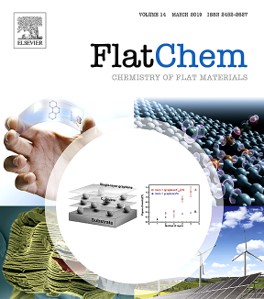 FlatChem, 2018:112:17-25
FlatChem, 2018:112:17-25
Jasim, D, Lozano, N, Bussy, C., Barbolina, I, Rodrigues, A, Novoselov, K & Kostarelos, K
Graphene based material (GBM) substrates are promising candidates for tissue engineering and as cell scaffolds owing to their outstanding properties that favour cell adhesion and growth. In this study, we report the fabrication and use of different oxidised graphene-based ‘papers’ as substrates for cell culture, using starting materials of different thickness and lateral dimensions. Graphite oxide (GTO) consisted of thicker sheets than the thinner large graphene oxide (l-GO) and small graphene oxide (s-GO) sheets. The ‘papers’ were prepared by vacuum filtration of the material suspensions and characterised by an array of experimental techniques. The substrates were then evaluated for cellular adhesion and proliferation with two epithelial cell lines that differ in their morphologies, the human lung cell culture (A549) model and the human neural cell culture (SH-SY5Y) model using microscopic analysis. Release of lactate dehydrogenase (LDH) in cell supernatants was measured to assess any cytotoxic responses. Our results revealed that the GO papers had similar physicochemical properties but differing topographies. The papers supported cell growth and no cytotoxicity was observed. These results suggest that substrates based on graphite and graphene oxide papers are suitable biocompatible cellular supports for anchorage-dependent cell growth and can be further explored for tissue engineering, regenerative medicine, substrates for cell growth and bionic applications
